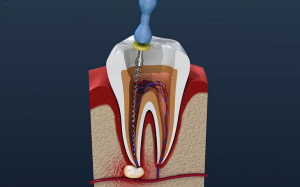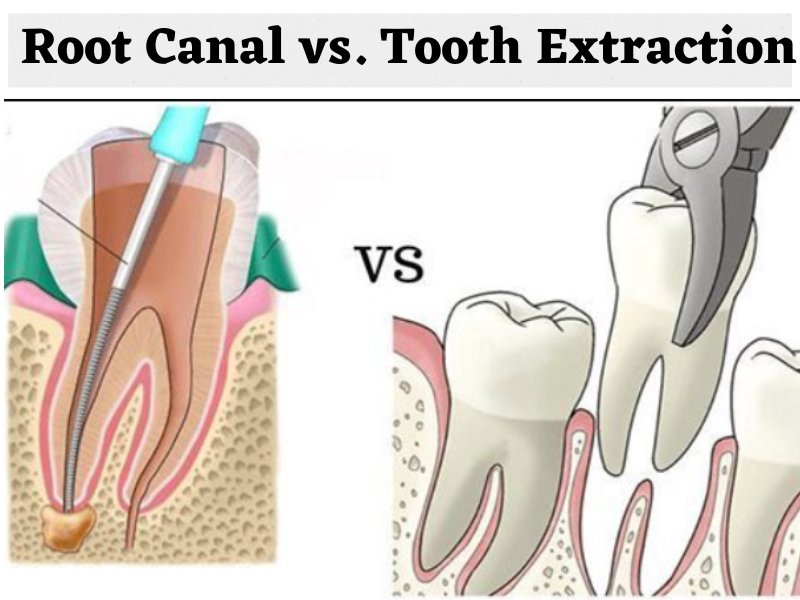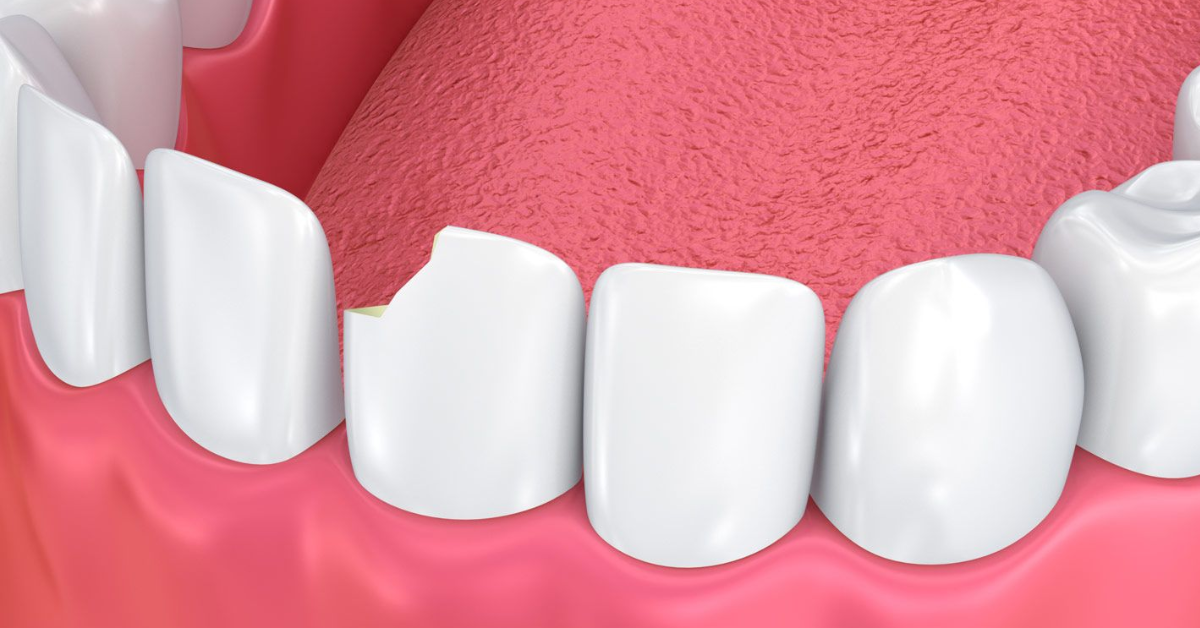Cavities and tooth decay are widespread problems that everybody faces. Around 91% of Americans experience cavities in their teeth, with about 65% facing tooth decay. While there are many reasons for these two dental problems, for badly infected teeth, there are two main routes of treatment – a Root canal vs Extraction. But what exactly is the difference between the two? Let’s find out more below.
What is A Root Canal Treatment?
Root canal treatment is a procedure to eliminate bacteria from a tooth’s infected root. It allows the dental professional to save as much of the tooth structure as possible, preventing reinfection of the tooth or adjacent teeth.
In a nutshell, the treatment revolves around removing the infected pulp tissue from the tooth’s center. It also includes cleaning and disinfecting the tooth and then filling it to minimize the risk of reinfection.
Steps Involved in Root Canal Treatment
- The dentist numbs the area around the infected tooth.
- They make an opening in the tooth to reach the center.
- The dentist removes the affected pulp tissue and the infected tooth structure using specific dental instruments.
- After cleaning and disinfecting the roots, they fill the tooth with gutta-percha.
- Depending on the condition of the tooth, they might add a temporary filling material with medication to allow the tooth to heal.
Once complete, the dentist will schedule follow-up appointments to replace the temporary filling material with a permanent one. They will also take impressions to place a dental crown over the treated tooth to restore its structure and function.
What Is A Tooth Extraction?

For centuries, tooth extractions were the standard practice in dentistry to treat infected teeth. But since the late 20th century, advances in dentistry have allowed dental professionals to preserve their patient’s teeth via root canal treatment.
However, there are many cases where tooth extraction is better than a root canal. Your dentist at River’s Bend Family Dental will opt to remove a tooth if –
- It is extensively infected
- It is injured along with the surrounding bone
- You have gum disease
- You have advanced periodontal disease
Tooth Extraction Procedure: Step-by-Step
- The dentist numbs the affected tooth and the surrounding areas.
- They might prescribe a mild sedative if you have dental anxiety.
- They loosen the tooth and remove it using dental instruments.
If your dentist performs a surgical extraction, they will cut open the gums to expose the tooth and bone. Once they remove the tooth, they will stitch the gums back into place.
The dentist will give you medication to help with the soreness after the procedure. They will also send you home with specific instructions that you must follow to ensure proper healing.
Root Canal vs. Tooth Extraction: Pros and Cons
In most cases, your dentist will recommend a root canal treatment over an extraction to save your tooth. Sometimes, people may want to choose an extraction over a root canal due to the cost of treatment. However, this may be a mistake.
You need to understand that your dentist will only recommend tooth extraction as a last resort to maintain oral health. As we mentioned earlier, some situations warrant an extraction. These include –
- Impacted teeth
- Overcrowding in the mouth
- Severely decayed teeth
Listed below are all the pros and cons of root canal vs. extraction –
Pros of Root Canal Treatment

- Preserves the natural tooth
- Retains one’s natural chewing ability
- Painless procedure
- Fewer chances of complications after treatment
- You can brush and floss normally as you would with natural teeth
- 30-60 minute procedure
- Partially covered by insurance
Cons of Root Canal Treatment
- Requires additional treatment such as dental crown
- The procedure may require multiple visits to the dentist
- More expensive than extraction
Pros of Tooth Extraction

- Shorter procedure (5-45 minutes)
- Cheaper than a root canal treatment
- Partially covered under insurance
Cons of Tooth Extraction
- Typically requires restorative procedures such as a dental bridge or implants to fill in the gap left behind by the extracted tooth
- May not look great (you may have a missing tooth for some time)
- Risk of infection or dry socket
Root Canal vs Extraction: The Difference in Costs
On average, root canal treatment can cost anywhere between $700-$1500. On the other hand, single tooth extraction can be $75-$200 for a simple procedure. Surgical extractions (for impacted or wisdom teeth) are pricier.
You might feel like extraction is better than a root canal due to the low initial cost. Add the cost of a dental crown that is necessary after a root canal, and the final bill shoots up by $300 or more. However, many long-term factors must be considered before making a final decision.
For instance –
- The cost to replace the missing tooth (dental bridge or dental implant)
- The cost of procedures after extraction, such as implant placement or other restorations
- The cost of future dental treatment when you replace a natural tooth with an artificial one
Root Canal vs. Extraction: Which Is More Painful?
Since your dentist will give you local anesthesia in both procedures, you shouldn’t feel any pain in either line of treatment. You may experience some soreness and pain after the procedures. Both root canals and extractions have similar levels of post-operative pain.
The pain you feel is easily managed with over-the-counter pain medication like ibuprofen and acetaminophen. In case your pain doesn’t go away in a few days, get in touch with your dentist.
Root Canal vs. Extraction: Which is Better?
Generally, a root canal treatment is considered better than an extraction because it doesn’t create a space in your jaw where the natural tooth was.
Due to the gap, adjacent and opposite teeth can shift and misalign, causing further dental problems. This is why replacing a missing tooth is super important.
However, an extraction may be recommended if the tooth is damaged beyond the point of saving. Make sure you get a dental bridge or an implant to prevent teeth from shifting.
Root Canal vs. Extraction: Which Is the Best Option For Me?
A dental professional uses their expertise and professional judgment to recommend the best line of treatment for you.
Depending on the condition of your tooth, the results of the initial exam, and your past dental history, the dentist at River’s Bend will determine the best course of action.
They will recommend a root canal treatment if the tooth can be saved. Alternatively, if the tooth in question is structurally and functionally compromised, removing it may be the best solution.
Root Canal vs. Extraction at River’s Bend Family Dental, MN
Dr. Andrea Wimmergren is the dental expert at the River’s Bend Family Dental office. As a dentist, she aims to provide superior dental care by empowering you to make informed decisions tailored to you.
As a top-rated dental clinic in Ramsey, the River’s Bend Family Dental team is very proud to serve our community. Our mission is to help our friends and family with the dental care they deserve – always with compassion, empathy, and a smile.
You can find out more by contacting us by calling or texting at (763) 576-1855. At the River’s Bend clinic, we welcome any of our neighbors in Ramsey, Anoka, Dayton, Nowthen, Otsego, Champlin, Elk River, Coon Rapids, and Andover.




